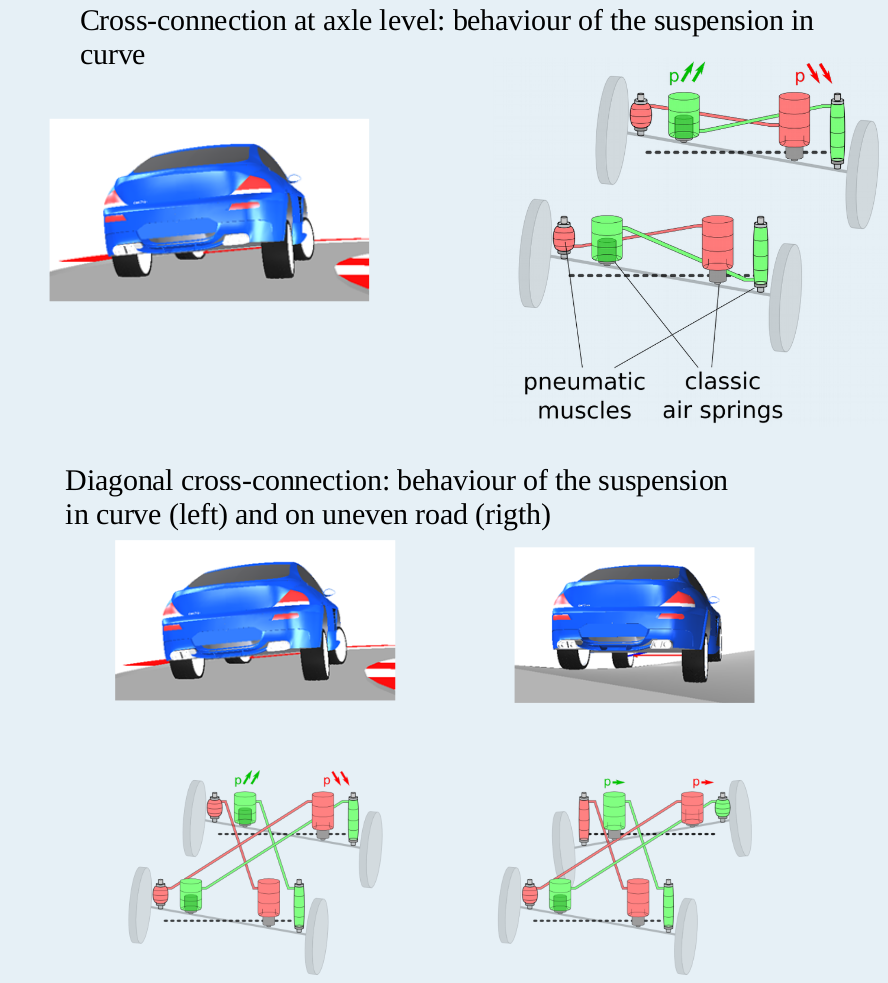
Adding pneumatic muscles in combination with classic air springs allows to increase the lateral stability of a road or rail vehicle while keeping good comfort performance. Indeed, using the principle of cross connected suspension, the muscles increases the roll stiffness of the suspension while keeping the same bounce stiffness. Furthermore, this suspension configuration reducing the warp stiffness keeping a good flexibity for riding offroad or passing though rail twist. The system simplifies the mechanical desing by removing mechanical roll stabilizer. It also reduce the air consumption of the suspension. In this project, Robotran was used to simulated the dynamics of trains and trucks. The multibody symbolic equations of Robotran were extended with pneumatic models that account for dynamics of compressed in the air spring and surrounding pipes and valves. This allows to simulate the dynamics of the whole vehicle with the novel suspension design and to assess its stability, the comfort, the air consumption, etc.

Pneumatic suspension, air springs, roll stabilizer, pneumatic muscles
[1] Docquier, Nicolas ; Collard, J.-F., Pneumatic anti-roll systems for railway secondary suspensions, 24th Symposium of the International Association for Vehicle System Dynamics, IAVSD 2015 (Graz, Austria) https://doi.org/10.1201/b21185-89
[2] Patent WO2015135587 – PNEUMATIC VEHICLE SUSPENSION, VEHICLE PROVIDED WITH SUCH A SUSPENSION AND METHOD FOR RETROFITTING A VEHICLE SUSPENSION